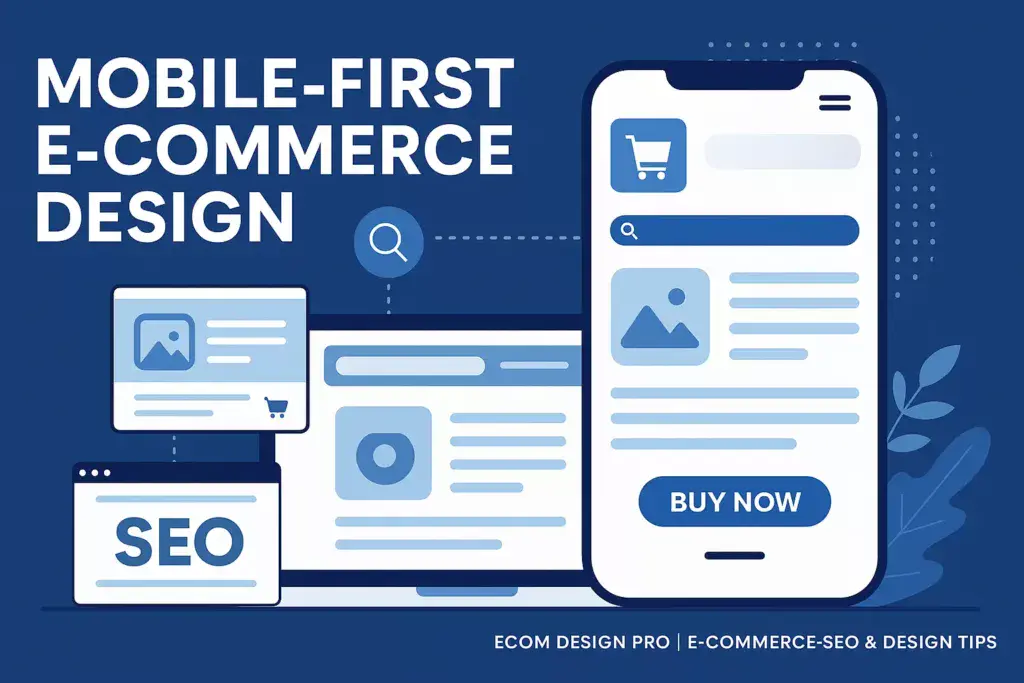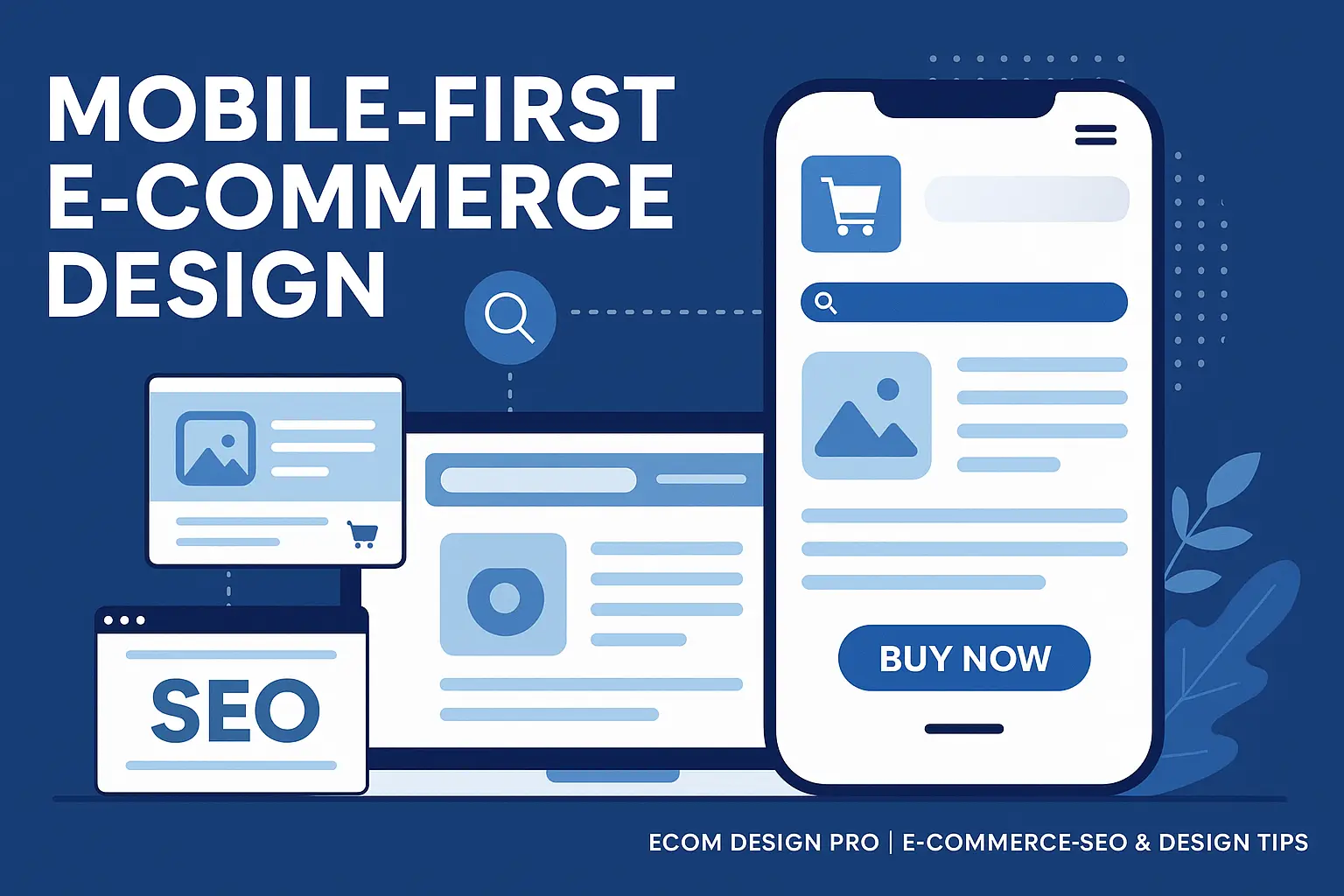
Introduction to Mobile-First E-Commerce Design
Mobile-First E-Commerce Design is the new norm, and it’s a game-changer. The mobile-first concept didn’t just pop up out of nowhere. It’s an evolution born from the way users interact with the internet today. Designers and developers have had to flip their perspective toward Mobile-First E-Commerce Design. Gone are the days where web design primarily meant desktop screens. Now it’s all about optimizing for those bite-sized screens we carry everywhere.
Why Mobile-First E-Commerce Design Matters
Why has mobile-first become such a big deal? Look at how people shop nowadays. Consumers are on the go, juggling a million things, and their mobile devices are their sidekicks. Most people don’t wait till they’re sitting at a desk anymore. They browse, compare, and purchase straight from their phones. For e-commerce businesses, this shift is huge—miss out on mobile optimization, and you’re missing out on potential customers.
As emphasized in the Mobile-First Design for Ecommerce: The No-Nonsense Guide,
“Mobile-first doesn’t mean ‘shrinking’ a desktop site. It means designing around mobile behaviors from the beginning.”
This highlights the importance of creating e-commerce experiences tailored to mobile users’ habits rather than retrofitting desktop layouts for smaller screens.
Here’s some food for thought: did you know that Over half of e-commerce traffic now comes from mobile devices, making Mobile-First E-Commerce Design crucial for success? And that’s not all. Conversion rates on mobile e-commerce platforms are climbing, a true testament to the power of an effective mobile-first strategy. These stats aren’t just numbers; they’re a wake-up call for businesses to get their mobile game on. Embracing the mobile-first era is not just smart—it’s crucial for survival in today’s digital marketplace.
Design Principles in Mobile-First E-Commerce Design
As emphasized in the Mobile-First Design for Ecommerce: The No-Nonsense Guide,
“Mobile-first doesn’t mean ‘shrinking’ a desktop site. It means designing around mobile behaviors from the beginning.”
Responsive layouts are the backbone of Mobile-First E-Commerce Design when it comes to making sure your site looks stellar on any device. When websites adapt seamlessly to different screen sizes, you’re providing a consistent experience for users everywhere—from smartphones to tablets to desktops. Gone are the days of pinching and zooming; now your content flows naturally no matter where customers view it.
Speaking of simplicity, there’s magic in minimalism. On mobile, less is definitely more. Users appreciate clean, uncluttered designs that guide them directly to what they need. It cuts down on load times too, which is a win-win since nobody’s got time for a slow site. Out with the flashy extras; in with sleek functionality.
Speed might not have always been at the top of the design agenda, but it sure is now. A faster site keeps users happy and engaged, while a slow one sends them packing. Every second counts in user experience. Optimizing images, minimizing code, and using efficient hosting are just a few steps to keep things quick. At the end of the day, it’s all about giving your customers the smoothest and most efficient journey possible. This ensures that Mobile-First E-Commerce Design delivers speed, simplicity, and a consistent experience
Enhancing UX in Mobile-First E-Commerce Design
Navigation can make or break your Mobile-First E-Commerce Design strategy. Users need to find their way around quickly, without getting lost in the shuffle. Flat, intuitive navigation structures are key. Think of hamburger menus and bottom navigation bars—these elements keep everything within thumb’s reach and ensure users get to their desired destination without a hitch.
Every swipe, tap, and pinch is like a conversation with your user. Integrating touch gestures into your design can make interactions feel more natural and engaging. Gestures add that layer of interaction that mimics real-world actions, making everything more intuitive for users who are used to tapping away on their devices.
Mobile screens pack a pretty big punch in small sizes. Tailoring content for these screens means focusing on readability and accessibility. It’s about making sure your text is legible without scrolling, your images are crisp, and your videos play without a hitch. Design elements should be touch-friendly too, with buttons and links adequately spaced to prevent accidental clicks.
These UX elements strengthen Mobile-First E-Commerce Design, keeping users engaged and satisfied.
Advanced Features in Mobile-First E-Commerce Design
Augmented Reality (AR) is changing the online shopping scene and shaping Mobile-First E-Commerce Design. Imagine trying on clothes or seeing how furniture looks in your home—all without leaving your couch. AR enhances the shopping experience, making it interactive and more concrete, which can boost customer engagement and confidence in purchasing decisions.
Voice search isn’t just for setting reminders anymore; it’s becoming a big player in e-commerce. As more folks rely on virtual assistants like Siri and Alexa, integrating voice search capabilities can elevate your service. It’s fast, convenient, and a must for hands-free shopping sprees.
Chatbots and AI aren’t just catching trends—they’re setting them. These virtual helpers are on standby 24/7, ready to offer personalized recommendations, answer queries, and even process orders. Their ability to deliver instant support is invaluable, making customer’s feel heard and valued at all hours.
SEO Optimization in Mobile-First E-Commerce Design
SEO in Mobile-First E-Commerce Design isn’t just about the usual keywords and backlinks game. Mobile friendliness has climbed up Google’s list of priorities with its mobile-first indexing. This means your site’s mobile version is at the forefront of how your site is evaluated. Don’t overlook mobile SEO; it’s about having clean site architecture and fast mobile load times.
Local SEO plays a major role for businesses that thrive on neighborhood clients. Folks searching on their phones are often looking for services nearby. Make sure your business shows up by keeping your local listings up to date and harnessing location-based keywords. Customers consider proximity when choosing where to spend their money.
As you navigate the mobile-first design, think about user experience as much as search terms. From structured data to descriptive alt text, ensuring everything you offer is mobile-ready strengthens both your user interactions and search rankings. This harmony between usability and discoverability is your secret weapon in conquering the mobile landscape.
This makes Mobile-First E-Commerce Design a direct ranking factor for Google’s mobile-first indexing.
Challenges in Mobile-First E-Commerce Design
Creating a visually appealing mobile site is challenging. It’s all about balancing looks with functionality, ensuring your aesthetic choices don’t slow down performance. Striking this balance requires a good eye and a keen sense of what’s trending without sacrificing speed or user experience.
Security remains a top concern. With more transactions happening in the mobile arena, protecting user data is crucial. Robust security protocols and transparent practices are key to maintaining customer trust. Ensuring that your site is secure from cyber threats should be a priority to protect both your business and its users.
Developing a mobile-first site can be costly, that’s a given. Budgeting is key—it involves efficiently allocating resources to design, development, and maintenance without breaking the bank. Prioritize where the most value is gained from investment and don’t hesitate to adapt if a strategy isn’t working as anticipated.



